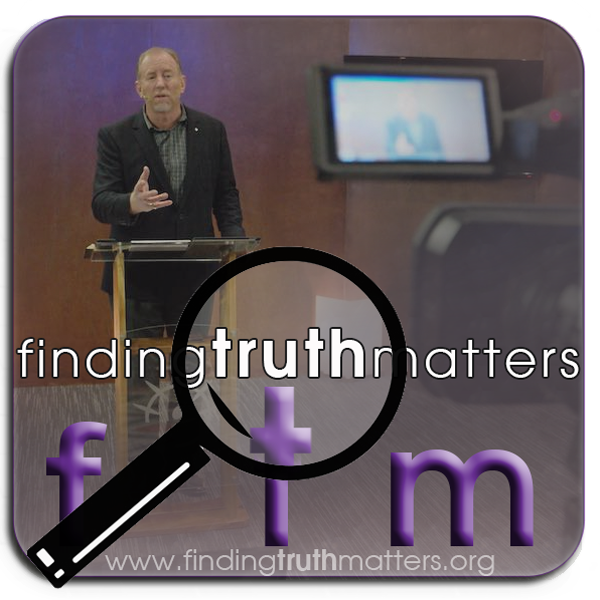 OUR 5 GREATEST PROBLEMS AND HOW WE MIGHT SOLVE THEM
OUR 5 GREATEST PROBLEMS AND HOW WE MIGHT SOLVE THEM
The world is increasingly becoming a global village. We now have entire media networks dedicated to potentially delivering news as it happens from anywhere in the world. Sadly, those of us in the more affluent parts of the world usually don’t get the most important news offered to us. Instead, we often get dished a diet of celebrity appearances, entertainment updates, political scandals, media commentary and sporting match results. To quote Neil Postman, despite the potential of our News media to inform us and even call us to action, we are “amusing ourselves to death.”
There are several websites which list the survey results of what people think are the world’s greatest problems. The major problem with such surveys is that they are largely Western and almost always fuelled by how the participants have been informed by their media sources. Here’s a summary and ranking of the word’s greatest problems, and possible solutions to them.

The word ‘Fundamentalism’ has come to mean those who think they are right and everyone else is wrong (‘us and them’). Added to this, Fundamentalism has come to mean that fundamentalists feel not only justified in attacking those who disagree with them, but morally obliged to do so. In it’s worst form it looks like murderous terrorism. In it’s more subtle forms it looks like slander of those who disagree with them. Religious Fundamentalism adds the dimension of claiming that they alone are endorsed by God to carry out these acts of terror and oppression. Typically women and children suffer under the shadow of Religious Fundamentalism. Thus, girls are treated as objects (so-called ‘female-circumcision’ is often inflicted on these girls and even genital mutilation is performed – this was highlighted in the movie about Waris Dirie, Desert Flower), denied an education, ‘married’ off as young as 13 (when their bodies are incapable of the physical implications of marriage).
 Fundamentalists are not prepared to defend their positions. Rather, they merely assert their positions are right and true and resent any challenges to them. Questioning is not allowed. Other views are maligned and misrepresented. This leads to hatred of others who do not agree with them. Dialogue is the solution. To foster the kind of international dialogue necessary to counter religious Fundamentalism and the subsequent threat of terrorism, trade, tourism, and educational exchange programs are needed. Christians are also prone to a kind of Fundamentalism. The solution to this is found in First Peter 3:15.
Fundamentalists are not prepared to defend their positions. Rather, they merely assert their positions are right and true and resent any challenges to them. Questioning is not allowed. Other views are maligned and misrepresented. This leads to hatred of others who do not agree with them. Dialogue is the solution. To foster the kind of international dialogue necessary to counter religious Fundamentalism and the subsequent threat of terrorism, trade, tourism, and educational exchange programs are needed. Christians are also prone to a kind of Fundamentalism. The solution to this is found in First Peter 3:15.
but in your hearts honor Christ the Lord as holy, always being prepared to make a defense to anyone who asks you for a reason for the hope that is in you; yet do it with gentleness and respect,
While dialogue is the starting point toward a solution, truth is the goal of such dialogue. This needs to happen at cultural, political and religious levels.  The world’s energy levels are finite. Most of our energy consumption is sourced from fossil-fuels. The consumption of fossil fuels has contributed in some degree to global warming due to the increase in greenhouse gases. With every energy crisis there is a cause for innovation. When it was feared that crude oil reserves would run out before the end of the twentieth century, car manufacturers came out with more fuel-efficient cars, electric cars, and even began trialling hydrogen fueled vehicles.
The world’s energy levels are finite. Most of our energy consumption is sourced from fossil-fuels. The consumption of fossil fuels has contributed in some degree to global warming due to the increase in greenhouse gases. With every energy crisis there is a cause for innovation. When it was feared that crude oil reserves would run out before the end of the twentieth century, car manufacturers came out with more fuel-efficient cars, electric cars, and even began trialling hydrogen fueled vehicles.  Added to this, many Western governments have begun to penalise those industries which pollute the atmosphere with high levels of carbon emissions. Early indicators seem to suggest that these measures are getting some traction with Global Warming being slowed and chronic smog in some of America’s metropolises is dissipating (any visitor to Los Angeles today who visited there over ten years ago will immediately see the difference – the formerly invisible horizon is now generally visible). There is still much to be done though. China, India, Saharan Africa, Mexico, each have critical sustainable energy challenges which has a direct bearing on air-quality. Anyone who has been to New Delhi has seen the orange haze that is perpetually over the world’s largest city. Visit Beijing and you cannot see the horizon for the smog – even the locals wear face-masks to minimise the effects of breathing their city’s air!
Added to this, many Western governments have begun to penalise those industries which pollute the atmosphere with high levels of carbon emissions. Early indicators seem to suggest that these measures are getting some traction with Global Warming being slowed and chronic smog in some of America’s metropolises is dissipating (any visitor to Los Angeles today who visited there over ten years ago will immediately see the difference – the formerly invisible horizon is now generally visible). There is still much to be done though. China, India, Saharan Africa, Mexico, each have critical sustainable energy challenges which has a direct bearing on air-quality. Anyone who has been to New Delhi has seen the orange haze that is perpetually over the world’s largest city. Visit Beijing and you cannot see the horizon for the smog – even the locals wear face-masks to minimise the effects of breathing their city’s air!
The World Meteorological Organization reports that the amount of CO2 in the atmosphere reached a record levels in 2012, or 140% of the pre-industrial level of 280 parts per million. The daily average of atmospheric CO2 as measured in Hawaii surpassed 400 ppm on May 10, 2013. It was 391.03 ppm in October 2012; 388.92 ppm in October 2011; and 387.15 ppm in October 2010. According to NOAA, 2012 was the hottest year in the U.S. (coterminous 48 states) since record-keeping began in 1895, and the ninth warmest on record globally. The total human-induced GHG emission is about 49.5 gigatons of CO2 equivalent per year. Nature absorbs about half of this annually, but that ability is diminishing.
To achieve carbon cycle equilibrium, assuming nature’s absorption capacities remained the same, we would have to cut back to about 25 GtCO2e per year, which is deemed politically and economically unacceptable. The politically accepted target is a 2°C increase by 2100, requiring a reduction to around 44 GtCO2e by 2020. The business-as-usual scenario is an increase to about 56 GtCO2e by 2020. Oceans absorb atmospheric CO2 (about 25% of it today) and will continue absorbing human-generated CO2 for decades if not centuries, which increases acidity, affecting coral reefs and other sea life. Over the long term, increased CO2 in the atmosphere leads to a proliferation of microbes that emit hydrogen sulfide—a very poisonous gas.
The Millennium Project
God has gifted His earth to mankind and ordained the timing of when certain energy resources become available. The availability of fossil-fuels today is the result of God’s initiating this provision millions of years ago. It’s only in the last couple of centuries that this supply of fossil fuel has been recognised as an energy source. There is good reason to think that the Creator and Owner of the earth has also provided the next source of energy for His imago dei (human beings) and inspires the technology to harness it. We are only now beginning to realise the extent of symbiotic relationships in our ecologies. For example, krill (phytoplankton) in the Antarctic waters (Southern Ocean) has a(n) (in)direct bearing on sustaining human life on our planet.
Phytoplankton forms the base of the food chain for all oceanic life. So the more phytoplankton, the greater the total biomass the oceans can support. Phytoplankton account for more of the oxygen pumped into the atmosphere and more of the carbon dioxide removed from the atmosphere than all other life-forms combined.
Dr. Hugh Ross, HTITBOJ, pg. 67
For phytoplankton to survive, they need soluble iron to feed on. Thanks to their predator, sperm whales, of which there is an estimated 12,000 in the Southern Ocean, who feed on them then produce iron rich excrement as a result, phytoplankton is able to have a continual food source. These krill remove 400,000 tonnes of carbon from the atmosphere each year and sperm whales breath out 160,000 tonnes of carbon. That is, sperm whales remove a net of 264,000 tonnes of carbon from the atmosphere each year (Ross, p. 67). As we learn how to harness new energy sources, we must increase our understanding of how our global ecology operates so that we can sustainably manage our contribution to global climate variations.
 Many people list this as the greatest problem facing the world today. Clean water is critical to life. The average person is comprised of at least 60% water! Unclean drinking water results in at least one million deaths a year (whereas it is estimated that around 16,000 people die from HIV/AIDs each year)!
Many people list this as the greatest problem facing the world today. Clean water is critical to life. The average person is comprised of at least 60% water! Unclean drinking water results in at least one million deaths a year (whereas it is estimated that around 16,000 people die from HIV/AIDs each year)!
Waterborne diseases are caused by pathogenic microorganisms that most commonly are transmitted in contaminated fresh water. Infection commonly results during bathing, washing, drinking, in the preparation of food, or the consumption of food thus infected. Various forms of waterborne diarrhoea disease probably are the most prominent examples, and affect mainly children in developing countries; according to the World Health Organization, such diseases account for an estimated 4.1% of the total DALY global burden of disease, and cause about 1.8 million human deaths annually. The World Health Organization estimates that 88% of that burden is attributable to unsafe water supply, sanitation and hygiene.
[1]
W.H.O. “Burden of disease and cost-effectiveness estimates”
Lack of sanitation is one of the major causes of drinking water contamination. The majority of our global village is without adequate sewerage. This enormous problem is being tackled with the placement of water purifiers into vulnerable communities by several Relief Agencies. But the scale of the problem requires massive focus on drastic improvements in sanitation and sewerage. Ideally this needs to happen without the use of synthetic chemicals.

The lack of fresh drinking water in many parts of the world is also the result of failed expected rainfall amounts. Deforestation in Sub-Saharan Africa, the Amazon Basin, and the Gobi region of China, has resulted in dire levels of desert expansion. Over the past two thousand years the Sahara has grown ten times larger and the Gobi three times larger! (Ross, 64) People on the edge of these deserts need international assistance to replant vegetation immediately. To restore natural rainfall patterns to these drinking-water depleted areas requires the planting of trees on a magnificent scale.

Improving sanitation in the worst affected areas requires improving literacy levels and introducing large-scale education programs to train people in safe hygiene practices. It is perhaps the grandest vision of global improvement to ensure that every person on the planet has access to clean drinking water.  It sounds stunning to speak of slavery occurring today! But it is not only happening – it is happening at a scale of unprecedented proportions in human history! Conservative estimates put the number of people being sold into slavery at around one million souls a year. The vast majority of these are sold for the global sex trafficking market. Infinitely more disturbing is that the age of these “sex-slaves” are young – very young. Children as young two years of age are being sold as sex objects. A recent ABC Four Corners report drew attention to case in Australia where a baby boy just two months old was sold into a ‘Man-Boy Sex’ pædophile ring! (ABC Four Corners Report)
It sounds stunning to speak of slavery occurring today! But it is not only happening – it is happening at a scale of unprecedented proportions in human history! Conservative estimates put the number of people being sold into slavery at around one million souls a year. The vast majority of these are sold for the global sex trafficking market. Infinitely more disturbing is that the age of these “sex-slaves” are young – very young. Children as young two years of age are being sold as sex objects. A recent ABC Four Corners report drew attention to case in Australia where a baby boy just two months old was sold into a ‘Man-Boy Sex’ pædophile ring! (ABC Four Corners Report)  Young girls are being kidnapped to feed this despicable trafficking. In the poorest regions of the world, parents desperate to survive resort to accepting the offers of the sex-traffickers and sell their children to them. In other instances, young girls are lured to the city with the false offer of parts in movies and television shows and the subsequent hope of lucrative salaries. Estimates vary on how many people are currently enslaved around the world. One source places the number at twenty-seven million – of these, twenty-million are in the Sub-Continent! Of these, in India alone, of the estimated three million prostitutes, it is conservatively estimated that one million, two hundred thousand of them are children (under the age of 12) [Source: http://www.dalitfreedom.org.au/trafficking/sex-trafficking.html].
Young girls are being kidnapped to feed this despicable trafficking. In the poorest regions of the world, parents desperate to survive resort to accepting the offers of the sex-traffickers and sell their children to them. In other instances, young girls are lured to the city with the false offer of parts in movies and television shows and the subsequent hope of lucrative salaries. Estimates vary on how many people are currently enslaved around the world. One source places the number at twenty-seven million – of these, twenty-million are in the Sub-Continent! Of these, in India alone, of the estimated three million prostitutes, it is conservatively estimated that one million, two hundred thousand of them are children (under the age of 12) [Source: http://www.dalitfreedom.org.au/trafficking/sex-trafficking.html].
Added to this are the children in what is referred to as “bonded” labour. There are fifteen million such children just in India! There are several solutions to this dire problem. These include: political solutions, where a government takes steps to prohibit this. This will demand a changing cultures of corruption where law enforcement has been bribed to turn a blind eye to this trafficking and now has a vested interest to maintain it! Organisations like the International Justice Mission, largely comprised of former police and military police, works alongside some of these Third World Governments to reinvent the culture of corruption among local police regarding this. It will also require government incentives to provide levels of financial assistance to those tempted (due to financial pressures) to sell their children into this vile trade. Individual solutions include child sponsorship through organisations like Compassion. Churches can partner with organisations such Empart who work on the ground to plant and strengthen local churches.  Nearly half of Sub-Saharan Africa subsists on less than $US1.25 a day. Around thirty percent of South Asia survives on less than $US1.25 a day. According to an Oxfam Report, the world’s 85 richest people as the bottom half of the globe’s population of 3.5 billion people! [Source] It’s generally very difficult for those of us in the West to appreciate what ‘poor’ means. Despite being among the richest 80% of the world, we often compare ourselves much richer people and pass ourselves off as ‘poor’! Our pathetic understanding of what poverty really is ignores the fact that nearly a billion people attempt to exist on less than $US1 a day when their daily expenses a closer to $US3 a day!
Nearly half of Sub-Saharan Africa subsists on less than $US1.25 a day. Around thirty percent of South Asia survives on less than $US1.25 a day. According to an Oxfam Report, the world’s 85 richest people as the bottom half of the globe’s population of 3.5 billion people! [Source] It’s generally very difficult for those of us in the West to appreciate what ‘poor’ means. Despite being among the richest 80% of the world, we often compare ourselves much richer people and pass ourselves off as ‘poor’! Our pathetic understanding of what poverty really is ignores the fact that nearly a billion people attempt to exist on less than $US1 a day when their daily expenses a closer to $US3 a day!

Often the world’s poorest are blighted by corrupt governments, heartless corporations who take advantage of people’s preparedness to work long hours for obscenely minimal wages, and criminal networks who use stand-over tactics to exploit the poor.

Poverty in these parts of the world is a cycle and a trap that, for the most part, entangles the weak, the vulnerable, the powerless. These people are not merely ‘poor’, they are the victims of poverty! Westerners are drunk with a sense of entitlement that has deluded them into thinking that their middle-class welfare is ‘justice’ and those who are poor must be lazy, willfully ignorant, or content to be so. The poverty ‘gap’ is the greatest problem facing our global village today. Can we solve it? Perhaps. Activists call this issue “social justice”. This is a grossly inappropriate usage of the term. The widening poverty gap is not a matter of social justice, it is a matter of justice! The problem with using an adjective to describe justice is that it actually diminishes the truth! The American talk-show host, Dennis Prager, says that as soon as anyone puts an adjective in front of the word “justice” it negates the word justice. When activists describe this issue as a matter of “social justice” they nearly always mean that Governments should increase taxation on the wealthy (both individuals and corporations) and redistribute that wealth to the poor. They also call for Western Governments to forgive the debts of these poorest nations. The plainest problem with these two pleas from activists is that they do not produce sustainable solutions to poverty – and many instances actually make the problems worse. Those who remember Bob Geldof’s Band-Aid’s 1985 16-hour concert (and later “Live-Aid”) to help famine victims in Ethiopia, might remember the follow up to this endeavour where investigators found that this aid effort had not only not achieved a net benefit, but had actually made the problem worse!
Former rebel leaders told the World Service’s respected Africa editor, Martin Plaut, that they posed as merchants in meetings with charity workers to get aid money.
They say that their organisation, the Tigrayan People’s Liberation Front (TPLF) used the cash, meant to pay for food for the starving, to fund attempts to overthrow the government of the time in a bloody civil war.
One rebel, Gebremedhin Araya, estimated that $95 million (£63m) of aid money from Western governments and charities, including Band Aid, was spent on weapons and the political machinery of the rebel party. He believed just $5 million (£3m) was used to help locals.
Read more
Where activists point their fingers at Western Governments and demand that they forgive debt and increase their foreign aid, the actual cause of poverty in the recipient nation goes unaddressed. When militarism, government corruption, rampant criminality, environmental abuse, or moral debauchery goes unchallenged, no amount of debt-waivers or foreign aid will ever solve national poverty! The most dramatic solution to national poverty that I am aware of in the modern era is what has recently happened in Rwanda. This was the result of Saddleback’s “Peace Plan”. It is a case-study in solving national poverty. Rather than giving unqualified aid, it focussed instead on education and training and cultural ethics. The affect of this Project is nothing short of amazing – especially considering the relatively short period of time it was able to make such a significant difference. I was personally present at Saddleback (October 2013) when Rick Warren reported on the original goals of this Peace Plan having all been achieved. Warren’s PEACE Plan was developed several years ago in an effort to encourage Christians worldwide to unite to combat what the Lake Forest, Calif., pastor and The Purpose-Driven Church author calls ‘the five giant problems facing the globe’ : spiritual emptiness, self-serving leadership, poverty, disease, and illiteracy. The PEACE Plan strategy is to equip and sustain networks of local churches and Christians to further: plant churches that promote reconciliation; equip servant leaders; assist the poor; care for the sick; and educate the next generation.
It was in 2005 that Warren was officially invited by the government of Rwanda to help the country in its efforts to become self-sufficient after years of genocide, according to a report from Time magazine. Since then, Warren and volunteers have been using his PEACE Plan and Purpose Driven Church ministry model to help fulfill that mission. The Purpose Driven Church model suggests that worship, fellowship, discipleship, ministry and mission should be the primary focus of Christian churches.
THE CHRISTIAN POST
Rick Warren’s P.E.A.C.E. Plan is stunningly simple, and now demonstrably effective.

I find great inspiration in Saddleback’s effectiveness in Rwanda. It shows that ordinary people can make an enormous difference where it was previously thought that the situation was hopeless. Every nation has its varying degrees of relative poverty. The proven principles that Saddleback have used in Rwanda are worth considering to address these localised issues. The ancient wisdom of Scripture’s instructions for treating the poor by giving them opportunities to work and earn may be even more relevant for today-
And you shall not strip your vineyard bare, neither shall you gather the fallen grapes of your vineyard. You shall leave them for the poor and for the sojourner: I am the LORD your God.
Leviticus 19:10
¶ “And when you reap the harvest of your land, you shall not reap your field right up to its edge, nor shall you gather the gleanings after your harvest. You shall leave them for the poor and for the sojourner: I am the LORD your God.”
Leviticus 23:22

I have just sketched the world’s five greatest problems and introduced ways. The enormity of these problems may cause some to despair that these are insolvable problems. However, the world has faced other global problems before and conquered them. The eradication of polio is just one such example. As a follower of Christ, I have good reason to believe that these problems are solvable. I also have good reason to believe that the Gospel teaching of Jesus Christ has had, and will continue to have, the greatest positive influence on the world socially, ecologically, economically, morally, and religiously – and still has the greatest potential to be the solution to each of these global problems.
References
Ross, Hugh, “Hidden Treasures In The Book of Job”, Baker Books, Grand Rapids, 2011
http://en.wikipedia.org/wiki/Waris_Dirie, Desert Flower
-
Sale!

The Big Deal – Part 5 – What’s The Big Deal About Parenting?, Full Audio
Original price was: $1.75.$0.95Current price is: $0.95. -
Sale!

The Big Deal – Part 4 – What’s The Big Deal About Sex?, Full Audio
Original price was: $1.75.$0.95Current price is: $0.95. -
Sale!

The Big Deal – Part 3 – What’s The Big Deal About Purpose?, Full Audio
Original price was: $1.75.$0.95Current price is: $0.95. -
Sale!

The Big Deal – Part 2 – What’s The Big Deal About Money?, Full Audio
Original price was: $1.75.$0.95Current price is: $0.95. -
Sale!

The Big Deal – Part 1 – What’s The Big Deal About Work?, Full Audio
Original price was: $1.75.$0.95Current price is: $0.95.










































0 Comments